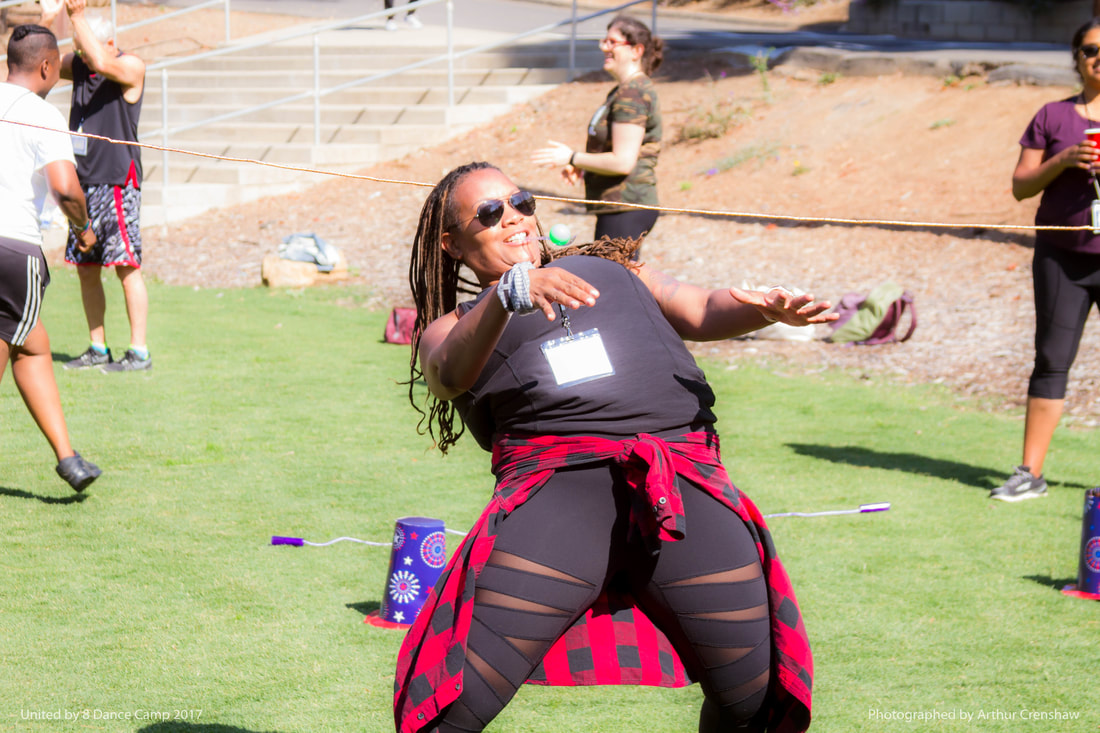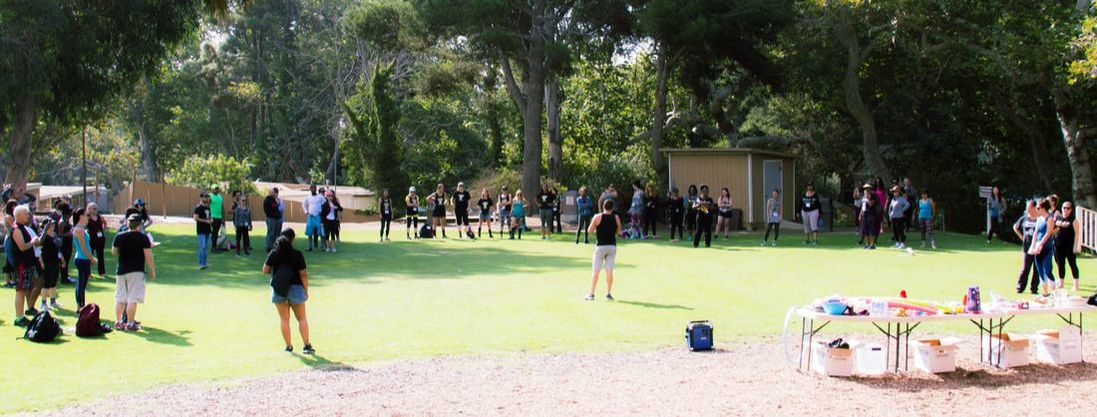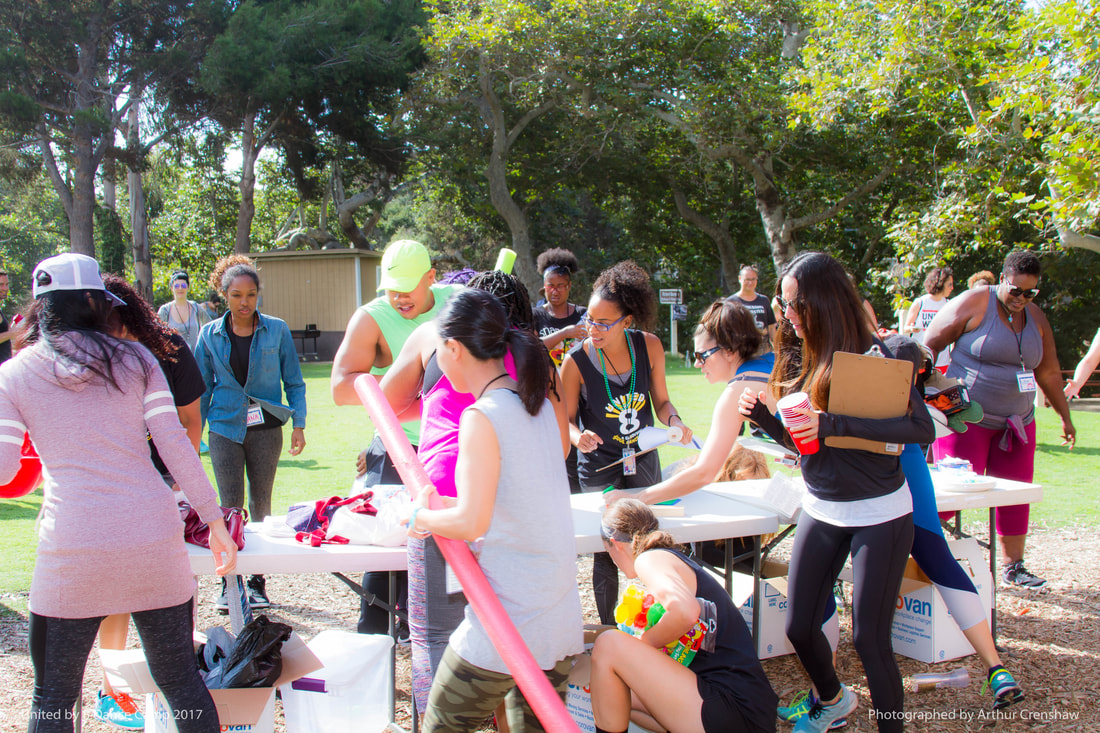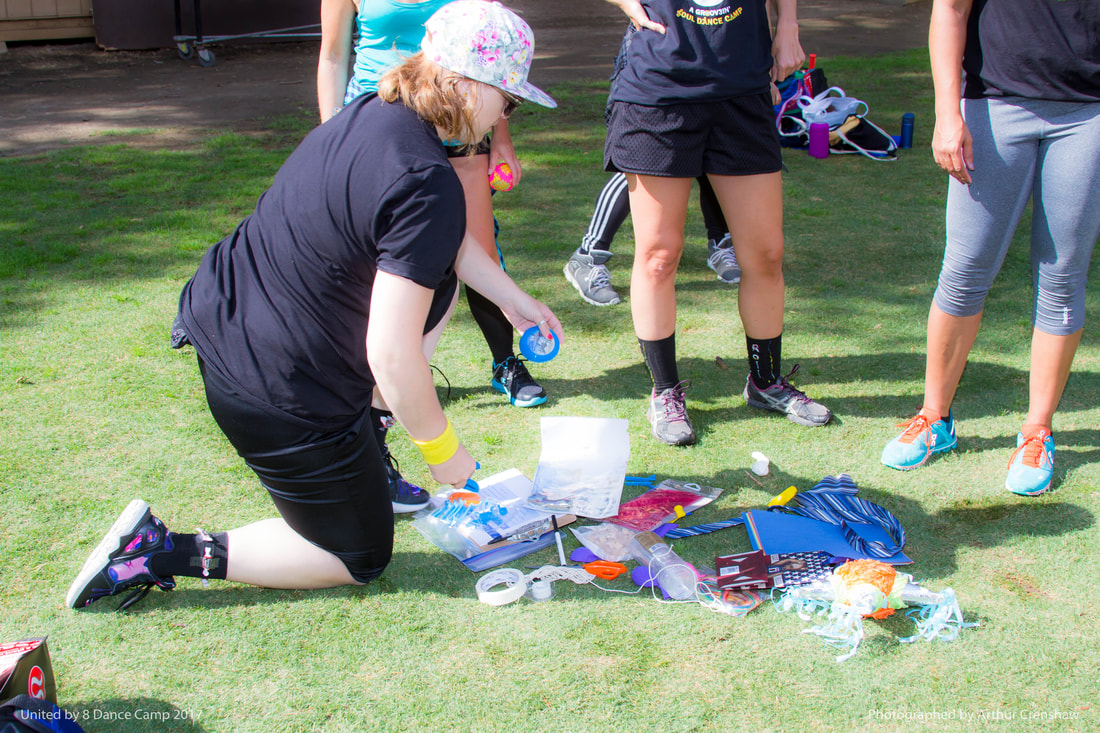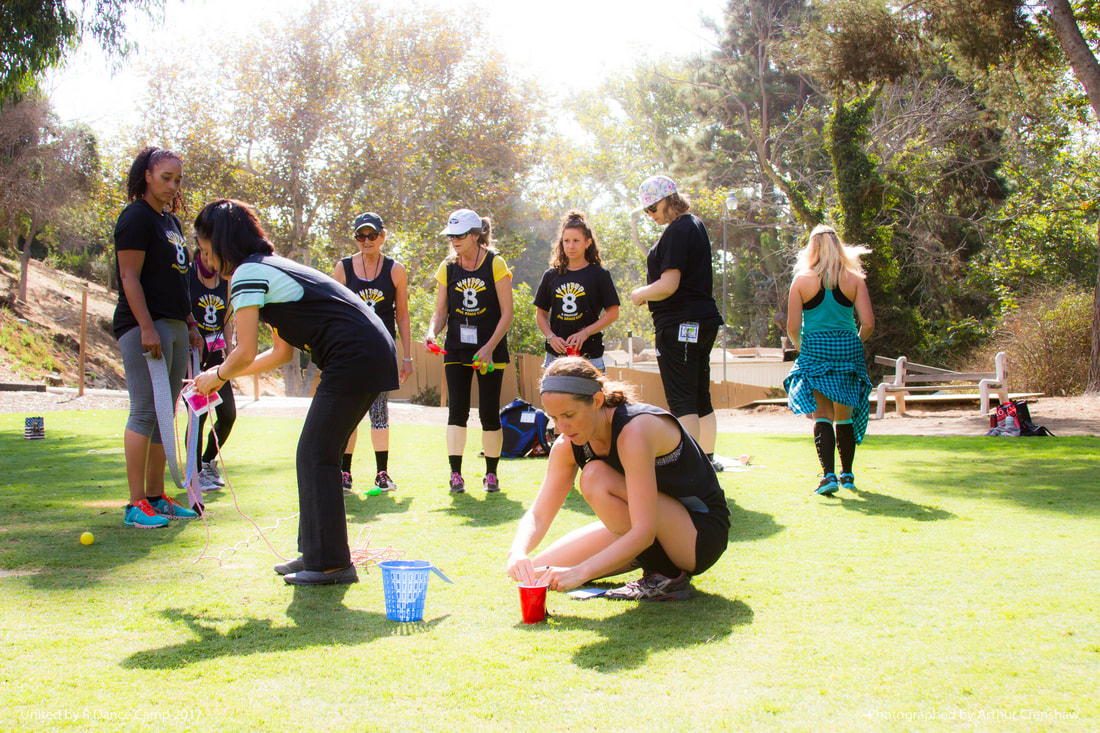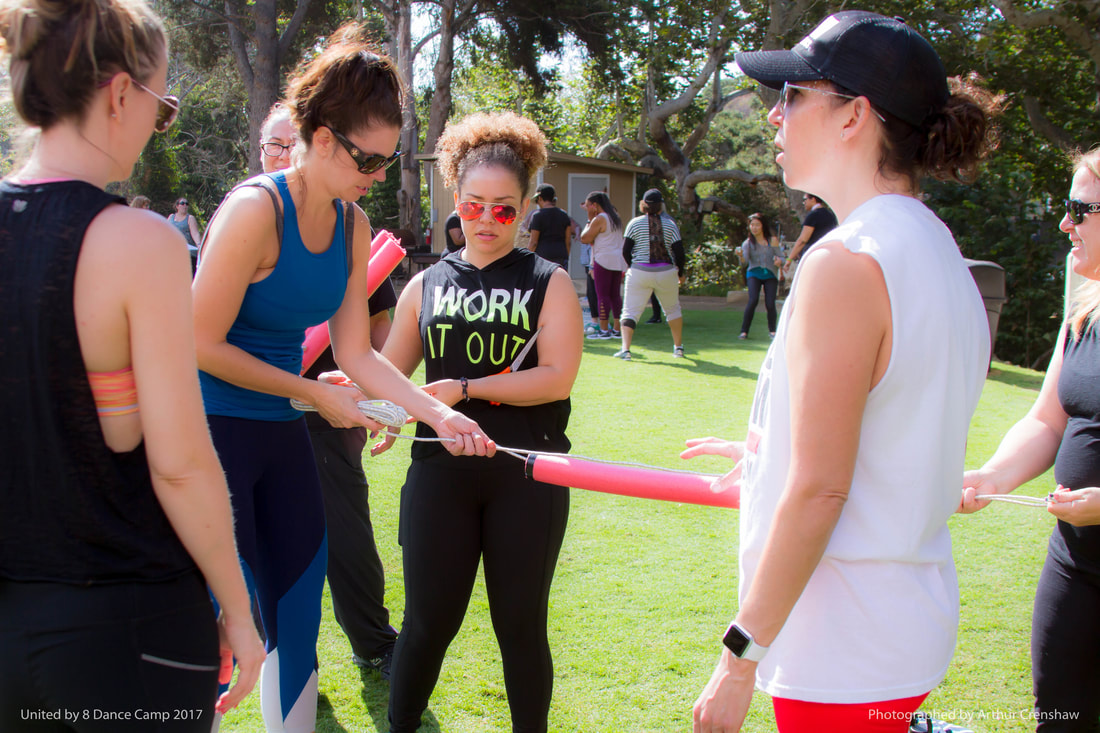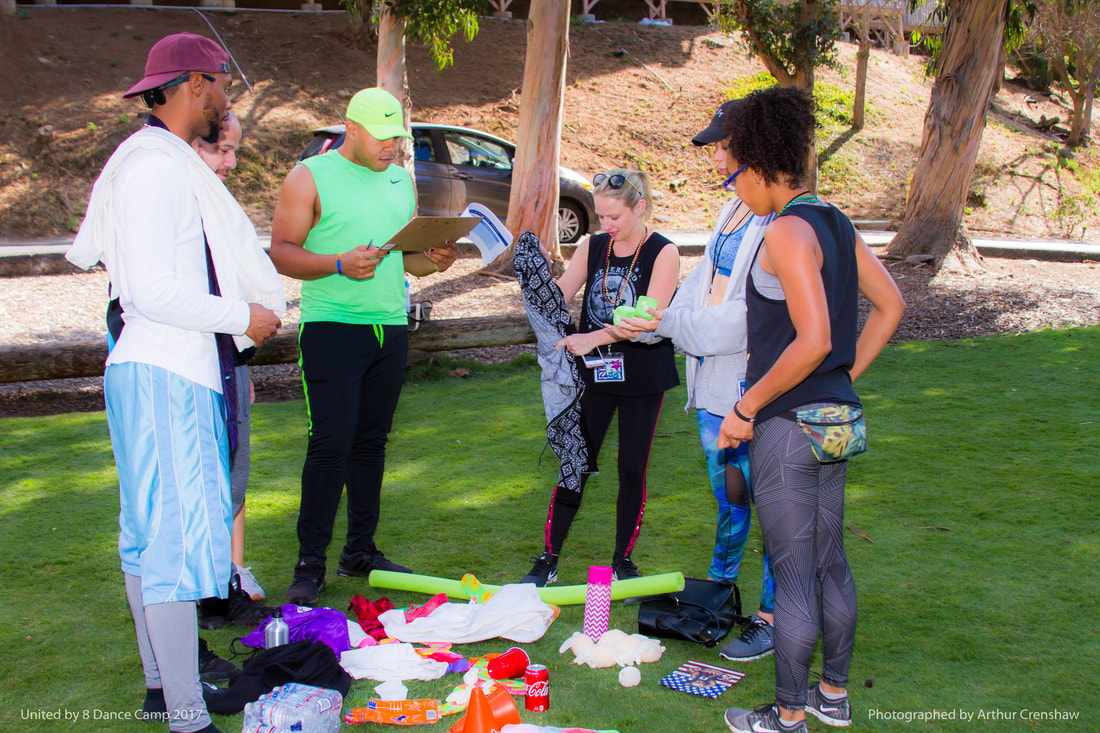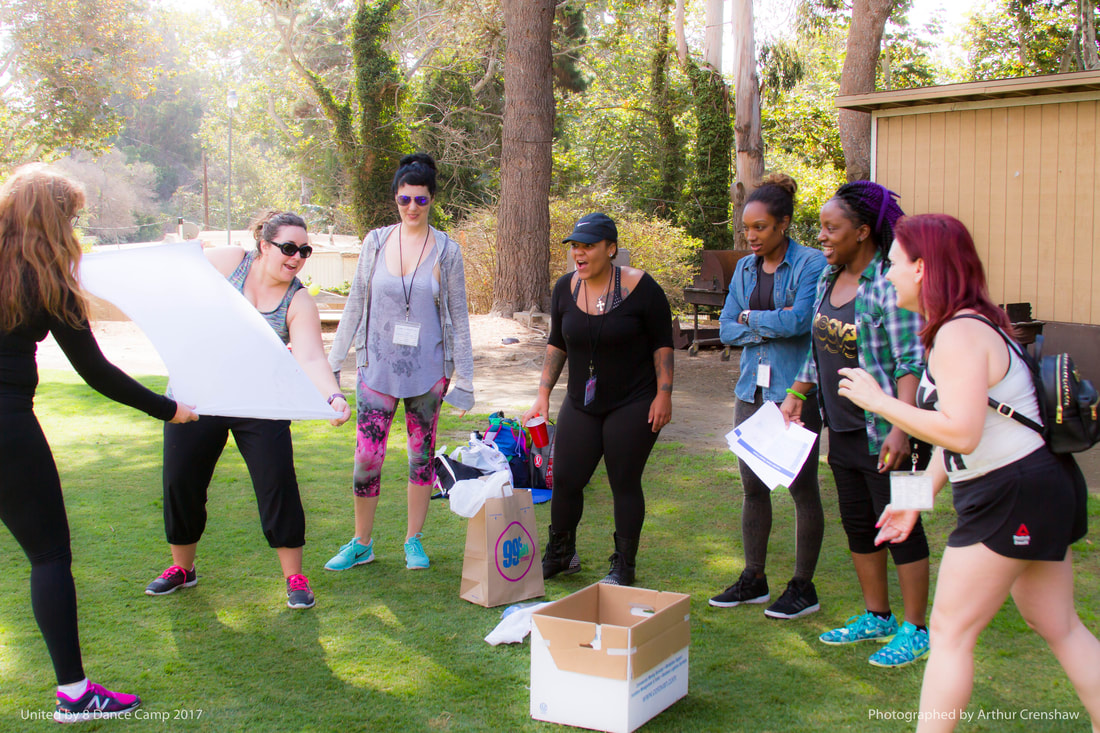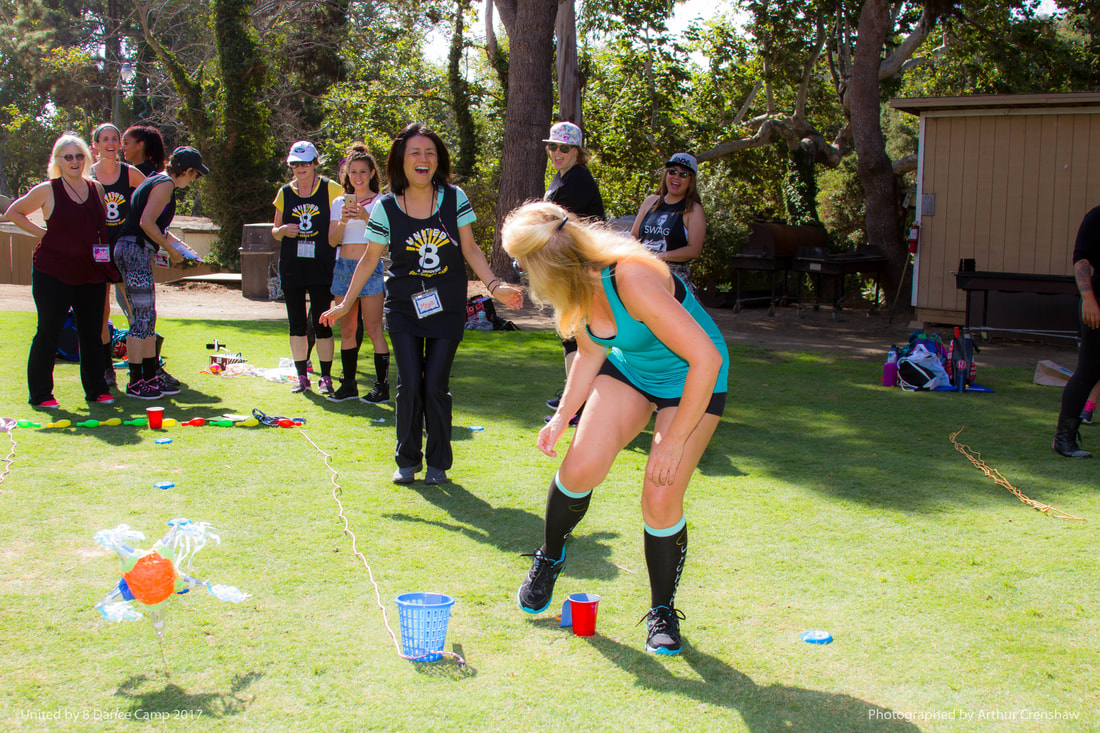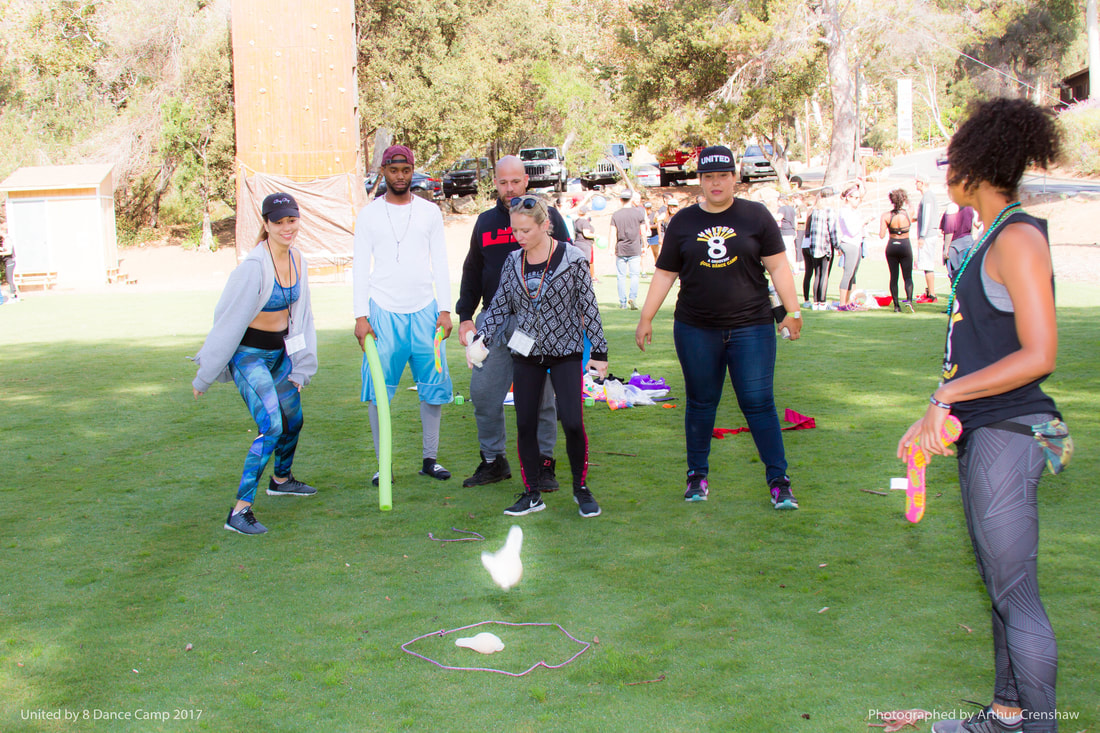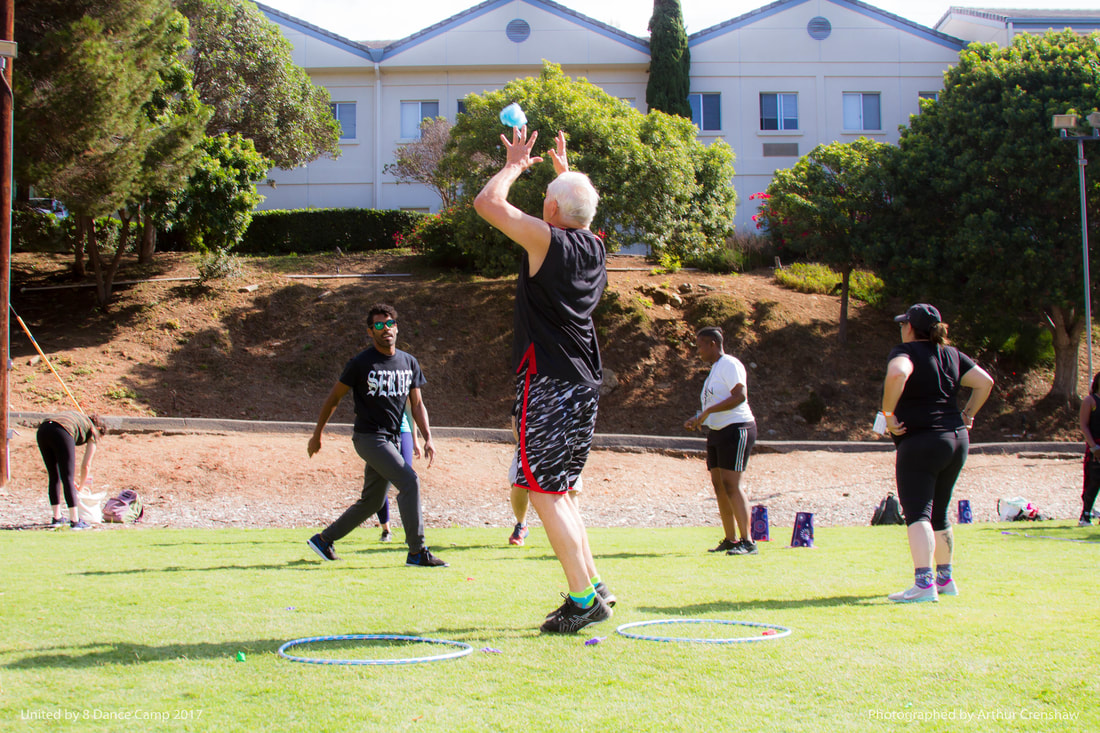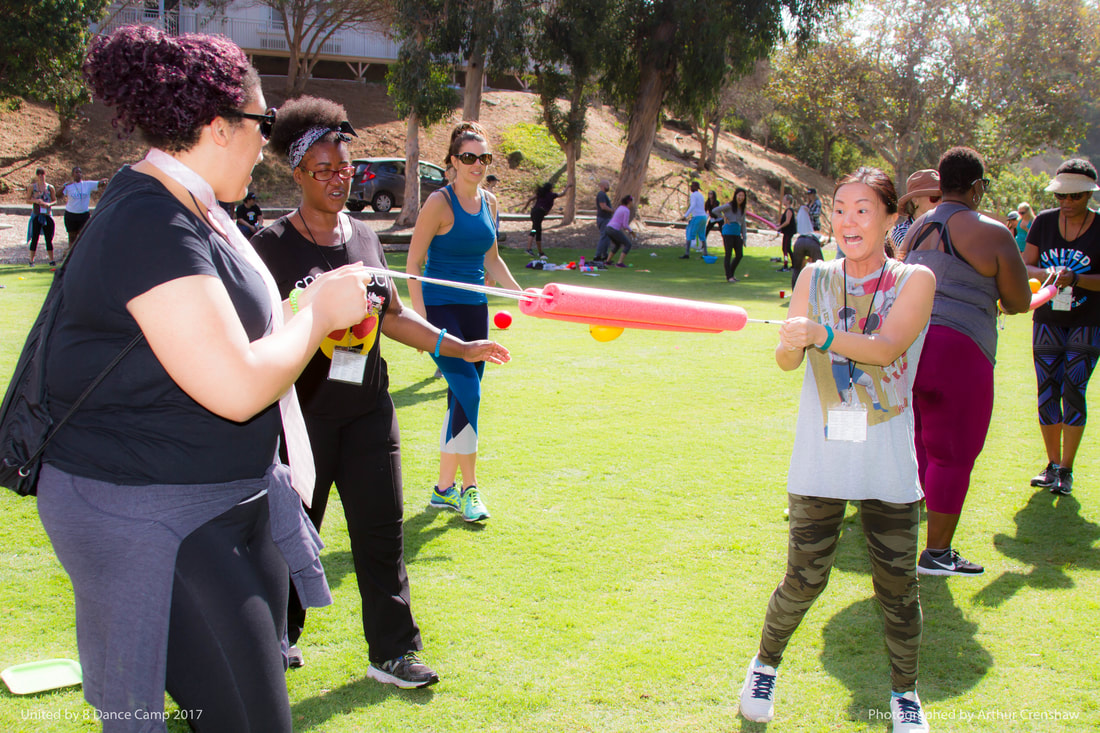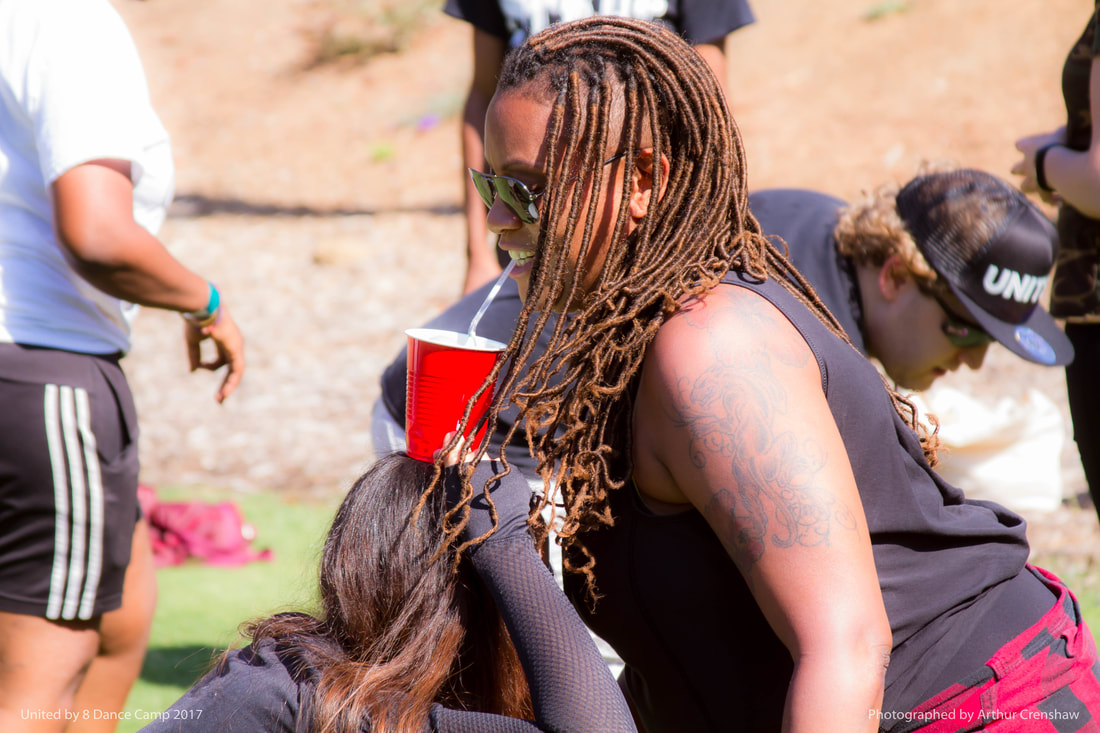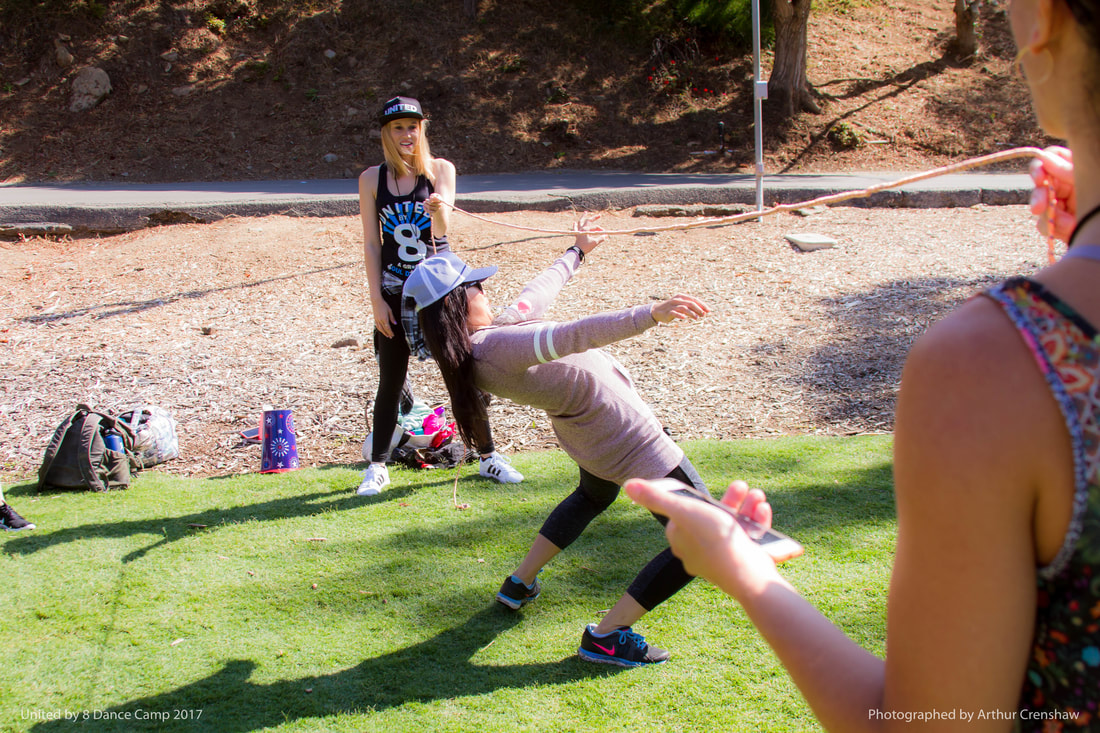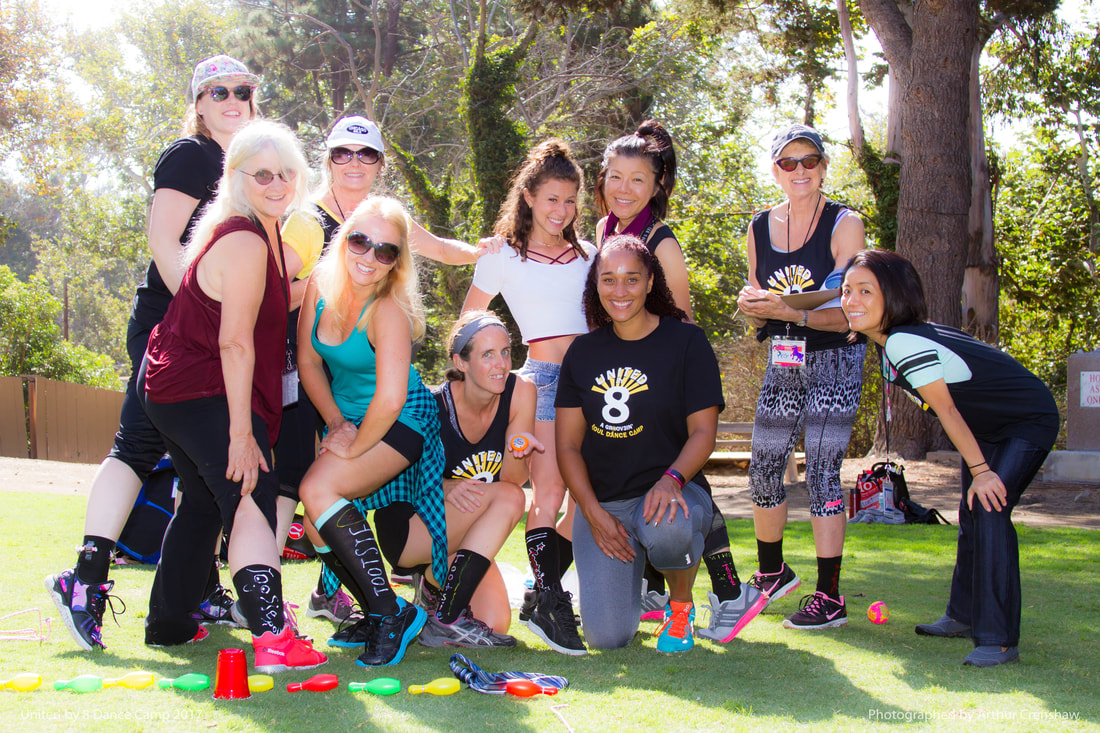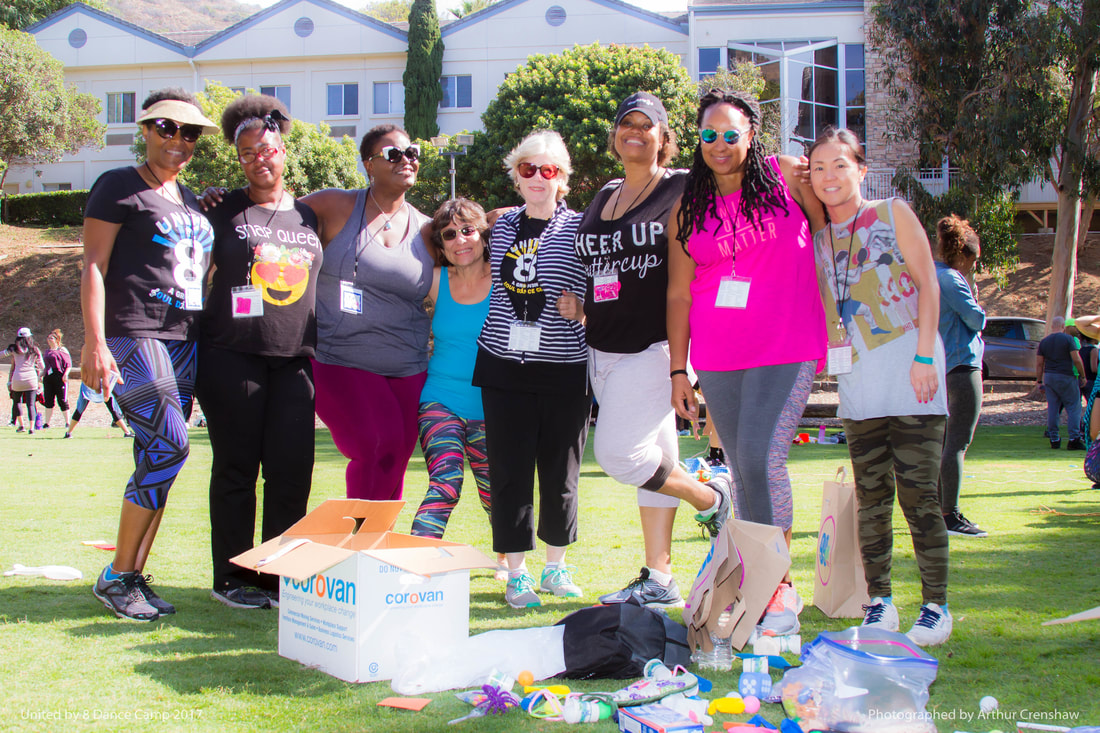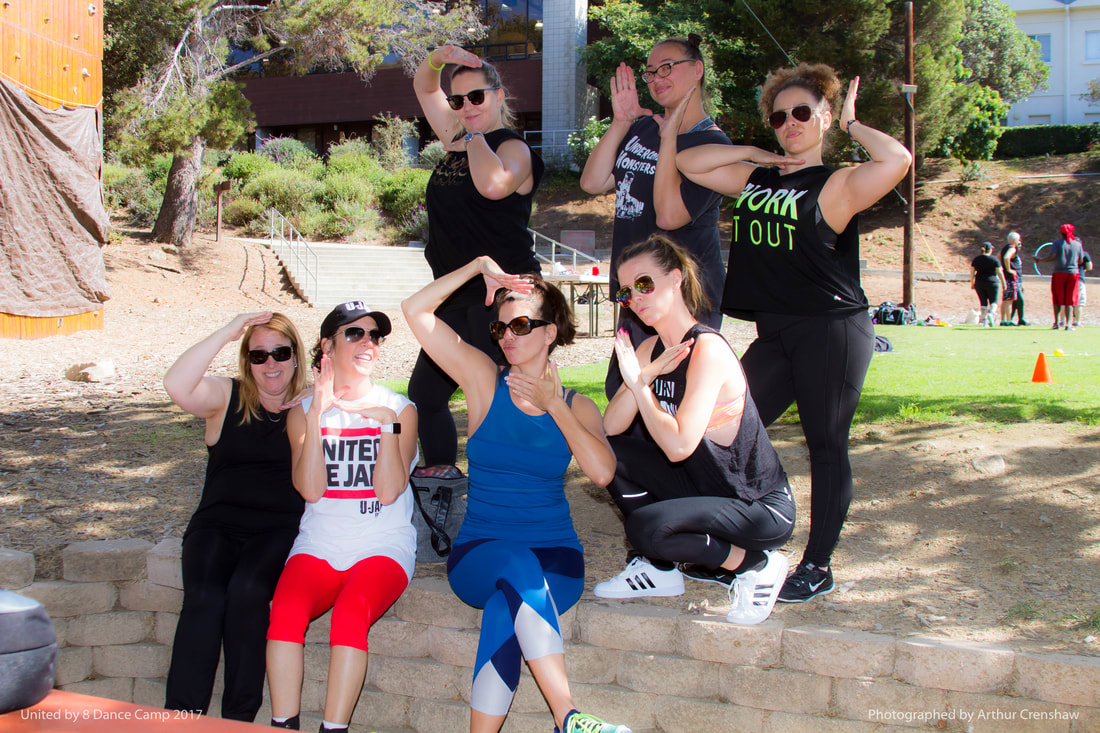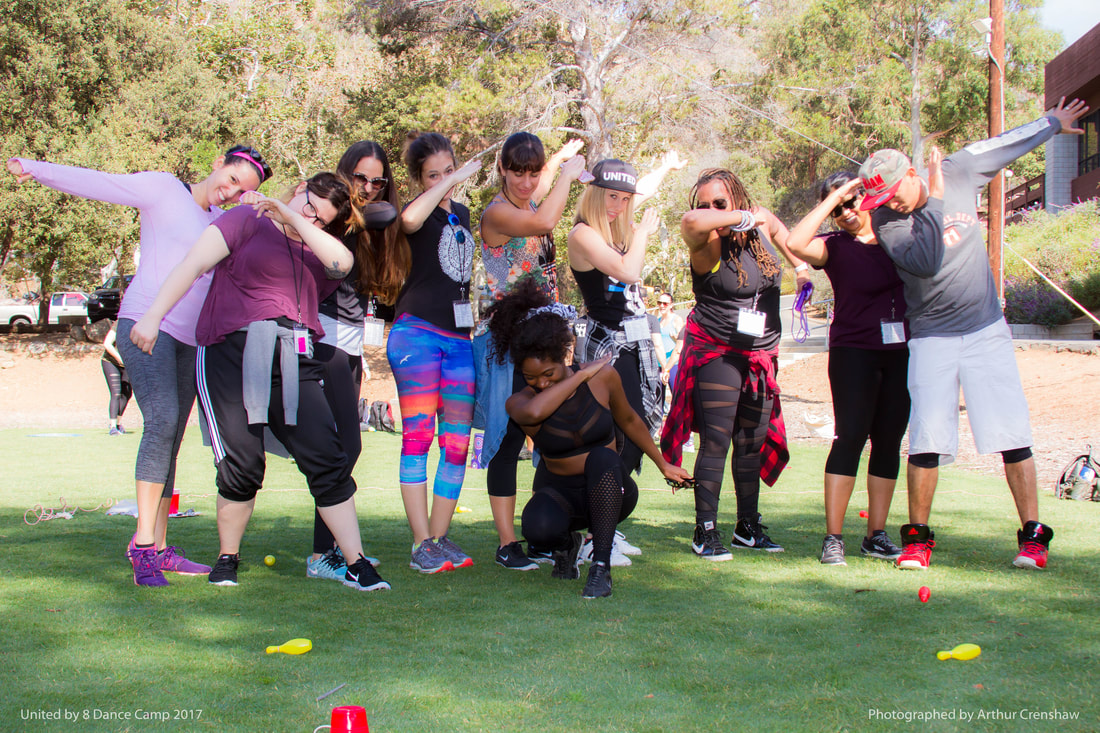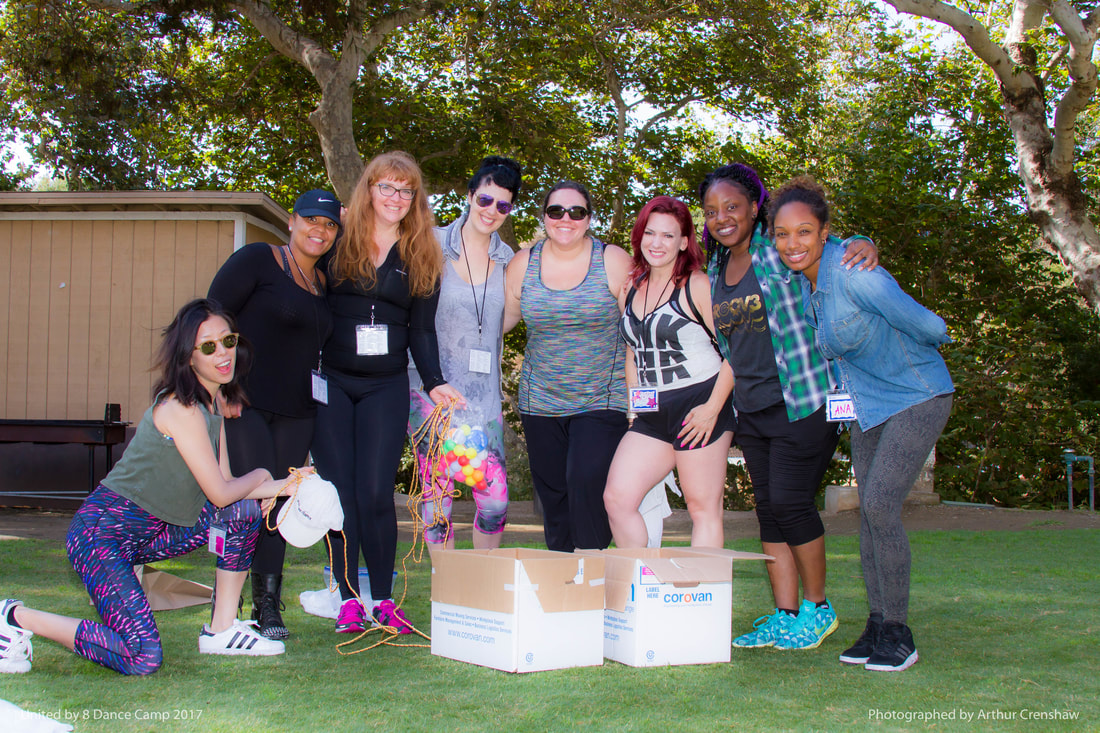|
Recently, I ran the first “DIY Carnival”, a hilarious team-building event where you get to invent and test your own crazy carnival game. The mini design workshop was part of the amazing weekend-long “United by 8” Dance Camp, and was a chance to get people moving, communicating, and creating together as a group. All while having fun and enjoying the beautiful weather we were lucky enough to have! After a brief introduction, I said “go” and teams erupted in activity! Many ran straight for the table of materials to grab whatever inspired them. I’d given each team a “DIY Basics” kit (scissors, rope, string, tape, markers, etc.), and they were free to use any materials from the boxes of random stuff that I’d brought along for the event. Each team also had a randomly-assigned suggested game as a starting point, but they were free to let their creativity take them in whatever direction it led. Like all my design workshops, this one followed the principles of “iterative design”, which involves first building something simple, trying it out, learning, following what works, and building the next version. Repeat as many times as you can. So after giving teams some time to build, I gave them the 10-minute warning that they had to have something playable by people from another team (always a great motivator). After 10 minutes, half of the members of each team shifted over and tried out the game of the team on their left. I admit it. I’m a little mean. I always force designers into a “first playtest” way before they feel ready. But that’s *exactly* when you should start playtesting, as soon as you can patch together anything playable. Even if it’s uncomfortable, you’ll learn a ton when the rubber (real players) hits the road (your game). My philosophy: The best way to resolve a design decision about whether to go with option A, B, or C, is to pick one at random and playtest it. You’ll then quickly learn that the right answer was D. Teams then had more time to take what they learned from the playtest and “follow the fun”, expanding on whatever worked the best, then polishing and honing the experience to get ready for the next round of playtesting. Though the overall workshop was short, many teams still took the “iterative design” process to heart, and did a great job quickly pivoting their game design to wherever they found the most fun. For example, one team started out with a game involving balloons, but soon discovered that they were blowing away in the wind and would pop too easily (thanks, dollar store!). Rather than continue down that path, they grabbed some shower loofahs (which had some similar characteristics to balloons), and ended up designing a really fun game about bopping loofahs between teammates while heading towards a hula hoop target. Another team was immediately inspired by the rope and pool noodles, and after playing around with the materials to see what they could do, they constructed hilarious two-person contraptions which had to be used to (carefully) carry some plastic lemons from point A to point B. One team began with a starting game that involved carrying ping-pong balls in cups on players’ heads. After experimenting, they discovered a really great mechanic that required one player to use a plastic spoon in their mouth in order to “fish out” the ping-pong ball from another player’s cup. The interaction was tricky, fun to watch, and lead to tons of laughing (and dropped balls). Following this discovery, they focused their game on this interaction, along with carrying the ping-pong ball on the mouth-spoon through a small obstacle course. All the teams did a great job embracing the playful spirit of the DIY Carnival. Even though they had only a very limited time, and even though none of the participants were professional game designers, they proved that anyone can be creative and make fun happen!
0 Comments
Leave a Reply. |
|
